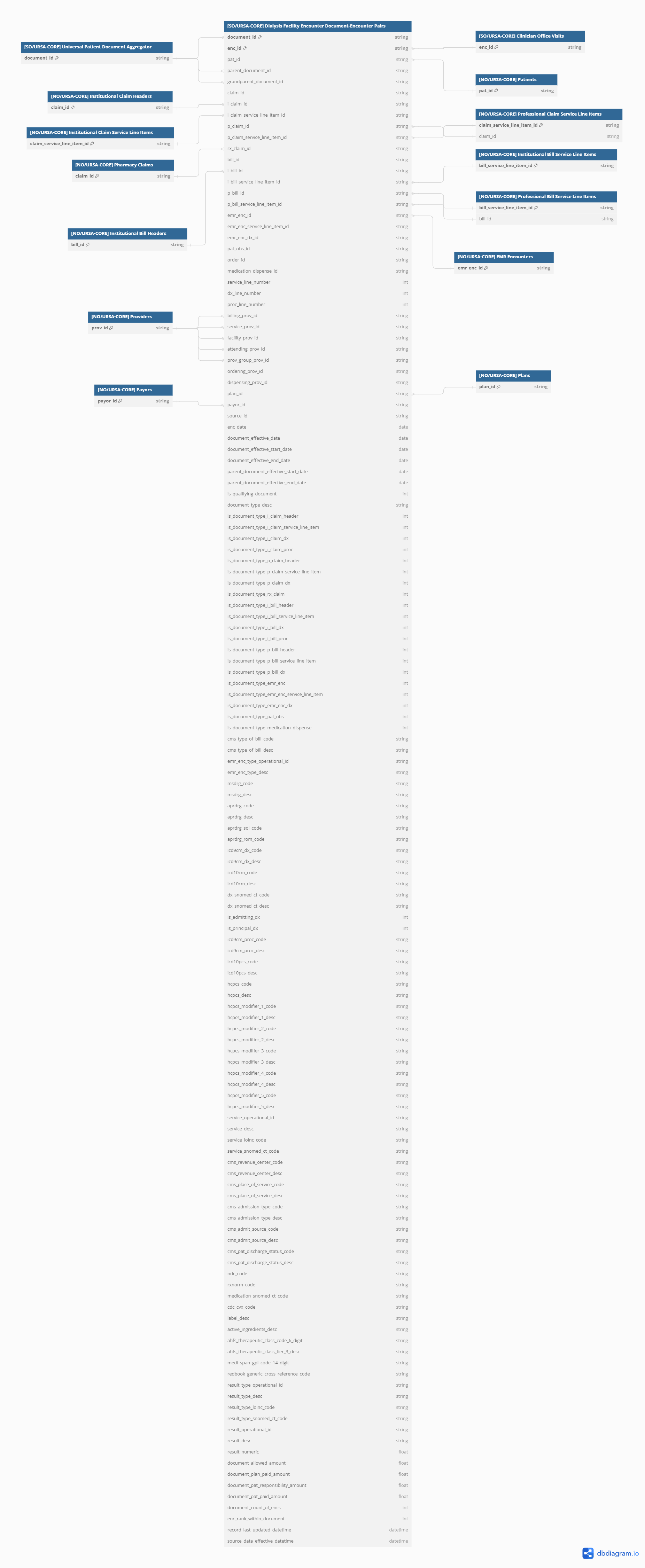Dialysis Facility Encounter Document-Encounter Pairs
- 04 Nov 2024
- 1 Minute to read
- Print
- DarkLight
Dialysis Facility Encounter Document-Encounter Pairs
- Updated on 04 Nov 2024
- 1 Minute to read
- Print
- DarkLight
Article summary
Did you find this summary helpful?
Thank you for your feedback!
Object Description
Collects information about dialysis facility encounters; contains documents uniquely related to one or more dialysis facility encounters. (Note that when a single institutional claim or bill header covers multiple such encounters, the header and associated diagnosis documents appear multiple times, once each for each encounter they are associated with.)
Metadata
- Table Name: ursa.so_ursa_core_enc_109
- Layer: SYNTHETIC_OBJECT
- Object Type: Integrator
- Temporal Class: Event
- Case ID: Document ID, Encounter ID
- Event Date: Encounter Date
- Primary Key: Document ID, Encounter ID
Relational Diagram

Dedicated Precursors
- [SO/URSA-CORE] Dialysis Facility Encounter Document-Encounter Pairs, Precursor 1 (Qualifying Documents): One record per professional claim or bill service line item, institutional claim or bill service line item, or EMR encounter record providing qualifying evidence that the patient had an encounter at a dedicated dialysis facility. Note that the encounter need not have included performance of dialysis.
- [SO/URSA-CORE] Dialysis Facility Encounter Document-Encounter Pairs, Precursor 2 (All Master Documents): One record per document associated with a dialysis facility encounter as a master document; additionally includes records that would not alone qualify as an encounter of this type, but which match to one that does.
- [SO/URSA-CORE] Dialysis Facility Encounter Document-Encounter Pairs, Precursor 3 (Non-Master Institutional Bill or Claim Headers): One record per institutional bill or claim header record that is the parent to a qualifying institutional bill or claim service line item but not identified as a master document for this encounter; used to augment the final set of document-encounter pairs with institutional bill or claim header and discharge diagnosis records; these would otherwise be omitted because they are not masters nor descendants of a master document in the encounter (because the header and diagnosis records are associated with multiple encounters).
Was this article helpful?
.svg)
